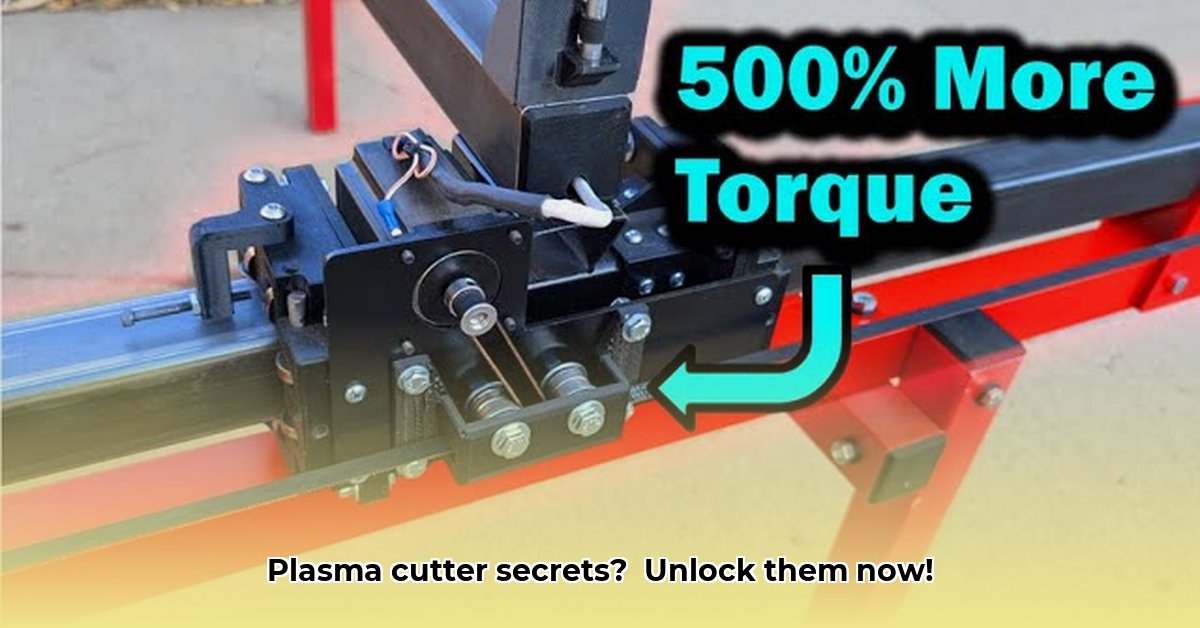
Plasma Cutter Tractor Supply: Precision Cutting for Farm Improvements
Farmers constantly seek ways to boost efficiency and reduce downtime. A plasma cutter, readily available at Tractor Supply, offers a powerful solution for various farm needs, from quick repairs to custom fabrication. This tool can significantly impact your bottom line by saving time and reducing the cost of outsourced repairs. But choosing the right model and understanding its safe operation is crucial. For more information on plasma cutters, check out this helpful resource.
Selecting the Right Plasma Cutter for Your Farm Needs
Choosing a plasma cutter involves careful consideration of several key features. Think of it like choosing the right tractor—the best choice depends on your specific applications. Tractor Supply offers a range of models with varying capabilities. Consider these factors:
- Cutting Capacity (amps): Higher amperage cuts thicker metals faster, while lower amperage suits lighter work. Consider the typical thickness of metal you'll be working with.
- Duty Cycle (%): This indicates continuous use time before cool-down is required. A higher duty cycle means less downtime during prolonged use. A high duty cycle is crucial for demanding tasks.
- Portability: Heavier models offer more power but less portability. Determine your need for mobility based on your work location. A lightweight model might be preferred for on-site repairs.
- Features: Pilot arc starting, digital controls, and other features enhance ease of use and precision. Prioritize features that directly address your needs. Do you need precise cutting, or is speed your primary concern?
- Price: Factor in long-term costs, including consumables like cutting tips and potential maintenance expenses throughout the equipment's lifespan. Calculate the return on investment (ROI) based on time saved and repair costs avoided.
Mastering Safe Plasma Cutter Operation: A Critical Aspect
Safety is paramount when operating a plasma cutter. Always consult the manufacturer's instructions before use. This step is non-negotiable, as improper use poses serious safety risks. Essential safety precautions include:
- Protective Gear: Wear appropriate eye protection, sturdy gloves, and protective clothing at all times.
- Ventilation: Operate in a well-ventilated area to minimize exposure to harmful fumes.
- Regular Inspection: Conduct regular inspections to identify potential problems before they escalate into serious issues.
How a Plasma Cutter Boosts Farm Efficiency
A plasma cutter from Tractor Supply isn't just a tool; it's an efficiency-boosting agent for your farm operations:
- Rapid Repairs: Fix broken equipment faster, reducing downtime and associated financial losses. A quick repair can mean the difference between a successful harvest and significant yield loss.
- Custom Fabrication: Create specialized tools tailored to your exact needs, eliminating reliance on outside manufacturers.
- Farm Improvements: Strengthen fences, repair metal roofing, and undertake other building projects with increased efficiency. This reduces reliance on expensive external contractors.
- Simplified Maintenance: Remove rusted bolts and cut away damaged sections easily, streamlining maintenance tasks. This can save hours of frustrating manual labor.
Precision Irrigation Financing for Smallholder Farmers: Bridging the Gap
Precision irrigation holds immense promise for smallholder farmers, but the high initial investment often poses a barrier to adoption. Fortunately, several financing options exist to make this technology more accessible. Let's explore these pathways toward sustainable agriculture.
Unlocking Funding Opportunities for Precision Irrigation
Securing funding for precision irrigation requires a multi-pronged approach:
- Governmental Support: Research national and regional grants and subsidies specifically designed to support sustainable agricultural improvements. Many governments offer financial aid for farmers adopting precision technologies.
- Microfinance and Agricultural Loans: Explore loans tailored to small-scale farmers from microfinance institutions and agricultural credit unions. These lenders often have more flexible requirements than traditional banks.
- Cooperative Financing: Partner with neighboring farmers to pool resources and secure better terms for equipment purchases or loans. This collaborative approach distributes financial risks and creates negotiating power.
- Crowdfunding and Impact Investing: Leverage online platforms to raise capital from individual investors interested in supporting sustainable agriculture projects. Many investors specifically target these types of initiatives.
- Equipment Leasing: Consider leasing equipment to spread the cost over time. This reduces the immediate financial burden and provides a flexible payment schedule.
- Technology Provider Partnerships: Some technology providers offer integrated financing packages, making the transition to precision irrigation smoother and more affordable.
Cost-Effective Precision Irrigation Solutions
Investing in precision irrigation does not require the most expensive technology. Consider these cost-effective options:
- Modular Systems: Start with a smaller system and expand gradually as your budget allows. This provides scalability and reduces upfront investment.
- Used Equipment: Carefully inspect and purchase used equipment to significantly reduce costs. Thorough inspection is crucial to ensure functionality.
- Open-Source Technologies: Explore open-source software and hardware for potentially substantial cost savings.
Three Pivotal Points:
- Plasma cutters from Tractor Supply offer significant efficiency gains for farm repairs and fabrication.
- Multiple financing options exist to make precision irrigation accessible to smallholder farmers.
- Careful planning and consideration of safety are essential for successful implementation of precision farming technologies.